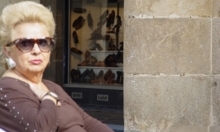Modernism.lt. Influences, Ideologies, Heritage
This lecture series aims at overlooking the ideologies and influences of Modernism as a cultural phenomenon; tries to evaluate the Lithuanian heritage of Modernism and its place within the broader context.
Some questions and themes to be touched upon in this session: what were the influences that determined the ideologies of Modernism as a cultural phenomenon; what kind of ideologies did prevail in Lithuania and elsewhere; how did such ideologies influence the architectural works of the time and how, in its turn, the heritage of Modernism has been influencing contemporary architecture, aesthetics and cultural phenomena; what were (or, rather, have been) the peculiarities of Modernistic architecture development in Lithuania within different contexts, such as the Polish period, Soviet times and the Baltic region; what is the phenomenon of “Occupation Modernism”, its conditions and approaches thereto.
We are planning to overview and analyze the key architectural works of Lithuanian modernists, their socio-cultural conditions and personalities. We are also interested in evaluation of Modernistic architecture; changing approaches towards Modernism and “Vanishing Modernism” situations in Lithuania and abroad, question of Modernization of Modernism, ecological and economy issues could be touched too.
The lectors in different areas from Lithuania and abroad are invited to touch upon the subject of Modernism in the aspects of influences, ideologies and heritage by any form acceptable to them.
The talks are held every Thursday, 8.00 p.m. at the National Art Gallery (NDG), Konstitucijos av. 22, Vilnius. Entrance is free of charge.
2010 = 1990 + 20 years of independent architecture
Reestablishing independence in Lithuania in 1990 gave a start for significant geopolitical changes in the region. FREEDOM gained at the time has found its shape in ARCHITECTURE.
This series of lectures suggests looking at the environment of architecture liberated two decades ago at different angles: what actually happened after such a hard turn of values westwards? How the evolution of Lithuanian architecture is different and how it is similar as compared to the experiences of its neighboring Baltic States? Is the inertia of the past still relevant? What kind acceleration has been acquired during all those years of freedom that forces architecture to move towards the future? Architects, architecture critics, historians and theorists will share their insights about the process that started two decades ago.









